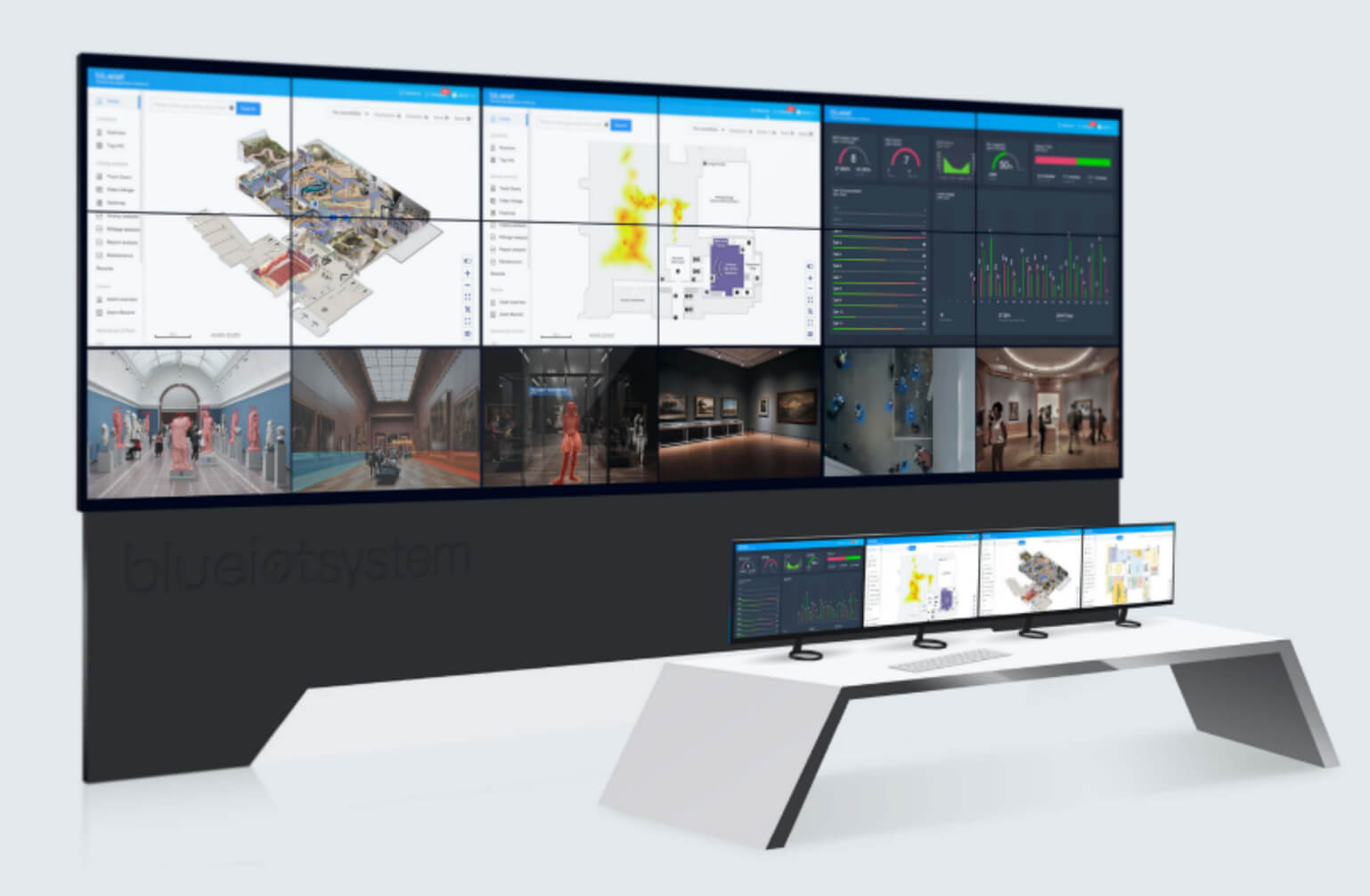Gone are the days of relying on manual logbooks or outdated tracking methods. Blueiot's RTLS system harnesses the power of wireless communication and state-of-the-art sensors to provide precise location data. This enables businesses to optimize their operations, enhance safety measures, and improve overall efficiency.

Revolutionizing Real-Time Tracking with Blueiot's RTLS System
Blueiot's indoor location platform incorporates a cutting-edge Real-Time Location System (RTLS) that revolutionizes the way businesses track and manage their assets and personnel. With advanced technology, the Blueiot RTLS system provides accurate and real-time information about the location of individuals and objects within an indoor space.
Safeguarding Premises through Video-Based Security with Blueiot
One of the standout features of Blueiot's indoor location platform is its ability to not only track individuals and assets but also video the real scene for security purposes. By integrating video surveillance with the RTLS system, Blueiot ensures comprehensive security coverage within indoor spaces.
The combination of video-based security and real-time tracking allows businesses to monitor critical areas, identify potential security breaches, and take proactive measures to mitigate risks. Whether it's monitoring restricted zones, detecting unauthorized access, or investigating incidents, the integrated solution enhances the overall safety and security of premises.
Streamlining Operations with Advanced Features
Statistics of regional personnel distribution provide valuable insights into personnel allocation and resource management. By analyzing the data generated by Blueiot's platform, businesses can optimize staffing levels, identify bottlenecks, and make informed decisions to improve operational efficiency.
Automatic clock-in/out and daily attendance checking eliminate the need for manual attendance management. With Blueiot's platform, employees can conveniently check in and out using their mobile devices or cards, reducing administrative overhead and ensuring accurate attendance records.
The management of inspection tasks becomes more efficient with Blueiot's indoor location platform. Businesses can create and assign inspection tasks to specific locations or individuals, track their progress in real-time, and generate comprehensive reports. This streamlines the inspection process, improves accountability, and ensures compliance with regulatory requirements.
Conclusion
Blueiot's indoor location platform revolutionizes the way businesses manage their indoor spaces. Through its advanced RTLS system, video-based security, and a range of productivity-enhancing features, Blueiot empowers businesses to optimize operations, enhance security measures, and achieve greater efficiency. By adopting Blueiot's platform, businesses can unlock new possibilities for growth while ensuring a safer and more productive work environment.